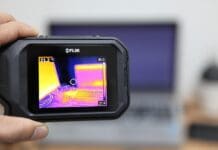This post is also available in:
 עברית (Hebrew)
עברית (Hebrew)
The airspace can be a crowded place, and with the emergence of unmanned aerial vehicles (UAVs) it is getting more crowded by the minutes. UAVs are being used in real estate, journalism, by emergency services, and hobbyists, and soon enough will be used for many more applications. Such overcrowding can cause big problems for safety, with hundreds of near-collisions recorded in a recent study.
To help make the skies safe once more, researchers and engineers from Stanford are working on software that can predict and prevent UAV collisions in urban airspace. Together with NASA, researchers from the Stanford Intelligent System Laboratory (SISL) are working on a UAV Traffic Management System (UTM) that may be the answer for this emerging problem.
“UTM is meant to fulfill a lot of the functions of air traffic control, but it will be in the cloud and largely automated,” says assistant professor of aeronautics and SISL Director, Mykel Kochenderfer.
The aim of the project is to direct the movement of many UAVs without the need for human intervention, and without traffic control officers monitoring each individual machine. To this end, the system will need to have automated conflict avoidance mechanisms incorporated. Such mechanisms would need to detect potential collisions and direct individual units to safe avoidance trajectories.
To harness current technologies, NASA envisions a cloud-based, autonomous UTM system. The first stage of the system, recently released, focused on GPS-based corridors for UAV flight paths.
“That works for farming applications,” says Hao Yi Ong, mechanical engineering graduate student. “But once you want to start moving transport drones around urban areas, you can’t really do that, because you’re not going to block out the airspace over entire residential areas just for when your aircraft is flying through.”
To tackle the challenges of urban environments, the Stanford team is developing mechanisms to separate multi-aircraft conflicts into paired problems, and to then pick the best possible course of action for each pair to safely avoid collision.
In the following stage, the team aims to incorporate environmental disruptions such as weather into the predictive mechanisms. They hope their software will be used in NASA’s final system, which is estimated to be complete by 2019.

























